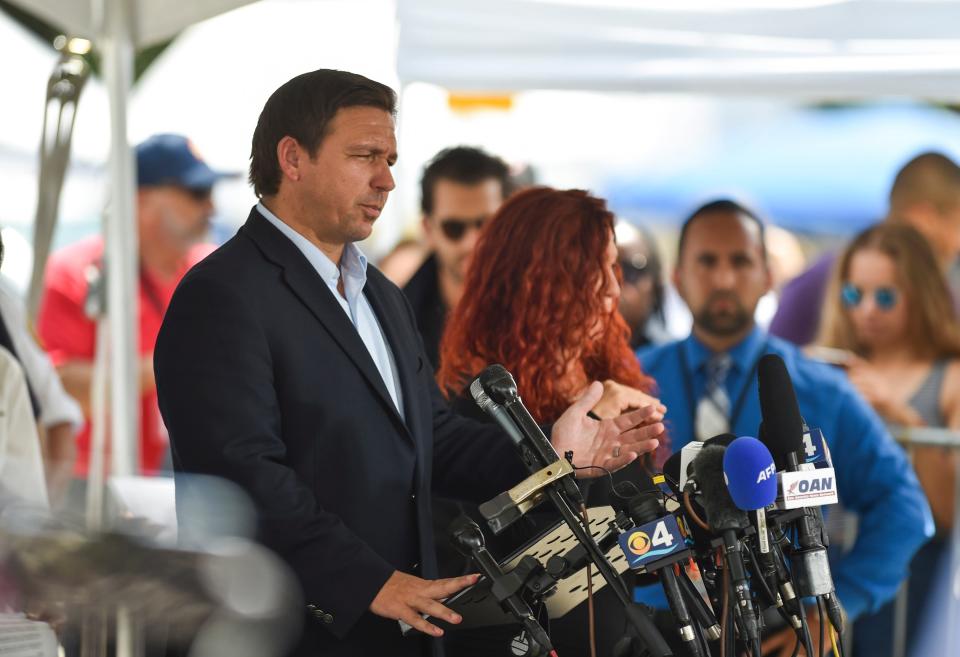Surfside: Could regular inspections prevent another tragic condominium collapse | Our View
More than five months after it happened, we still don't know exactly what caused the collapse of a high-rise condominium in a Miami suburb that killed almost 100 people and left many others homeless.
In time, we may learn Champlain Towers South in Surfside crumbled due to a structural defect, the ravages of coastal weather, or some combination of the two.
Investigation into the cause or causes of the collapse should continue, not only to provide closure for the victims, but also to hopefully yield some information that could be useful in preventing similar tragedies in the future.
This case matters not only to the families directly affected by the tragedy, but also those of us living elsewhere in Florida.
Hidden hazards: Oceanfront condos offer views of paradise. But Florida's climate can pose danger.
Increasing scrutiny: Treasure Coast officials, condo residents ponder inspection changes after Surfside collapse
Cautionary tale: Collapse of Surfside condo towers might eventually impact you more than you think | Opinion

According to a task force empaneled by the Florida Bar Association, there are more than 1.5 million condominium units in the state. More than 2 million people live in condo units at least 30 years old.
Given those statistics, it seems reasonable to imagine another condominium collapse could happen, causing massive casualties and destruction.
It might happen here. There are numerous oceanfront high rises in our three-county area exposed to similar environmental conditions found in Surfside.
And unfortunately, shoddy construction might be found just about anywhere.
The Florida Legislature is scheduled to reconvene next month. When it does, we hope reforms aimed at preventing future collapses will be among legislators' top priorities.
A coalition of Florida building professionals has devised recommendations that would make an excellent starting point for such discussions.
Among other reforms, the coalition has recommended residential buildings with more than 10 occupants and more than 2,000 square feet — with the exception of detached one- and two-family dwellings and townhouses not more than three stories — should have mandatory structural inspections 30 years after first occupancy, with re-inspections required every 10 years.
Buildings more vulnerable to steel corrosion (within three miles of saltwater sources) should have the first recertification inspections 20 years after first occupancy, with re-inspections required every 7 years afterward, the coalition recommended.

Regular recertification inspections would be an excellent place to start since, astonishingly, there's no statewide requirement for that now.
New buildings must be constructed according to a set of codes, but once they have passed those initial inspections, there's no required follow up to check on their condition through the years.
Local governments can impose their own recertification requirements, but most have not.
The cost of such recertification inspections should be borne by the condominium associations and residents, as opposed to the taxpaying public at large.
Of course, inspections won't do a bit of good unless there's action taken to correct any problems that are found.
This could be problematic, if it's left solely to the discretion of condominium association board members.
Many of them are unlikely to have enough expertise in engineering to properly assess potential dangers in deteriorating buildings.
Some might also be reluctant to spend money on long-term repairs if they're planning to live in a condo only for a few more years.
In light of that, it would be prudent to require inspection reports to be submitted to each condominium's insurance carrier, as well as the association's board.
A part-time board made up of condo residents might not always see the big picture, but insurers facing potentially huge payouts for claims probably will.
Also, recertification reports should be filed and available for inspection at local government offices, so residents and potential residents could see them without having to go through association boards or real estate agents who might be reluctant to share them.
Might this drive up the cost of condo living, particularly along the coast? Maybe, if recertification inspections lead to repairs that wouldn't otherwise be made.
If the alternative is waiting for another high rise to pancake and destroy scores of lives, it's a risk worth taking.
Editorials published by TCPalm/Treasure Coast Newspapers are decided collectively by its editorial board. To respond to this editorial with a letter to the editor, email up to 300 words to TCNLetters@TCPalm.com.
This article originally appeared on Treasure Coast Newspapers: Avoiding another Florida condo collapse requires vigilance | Our View

